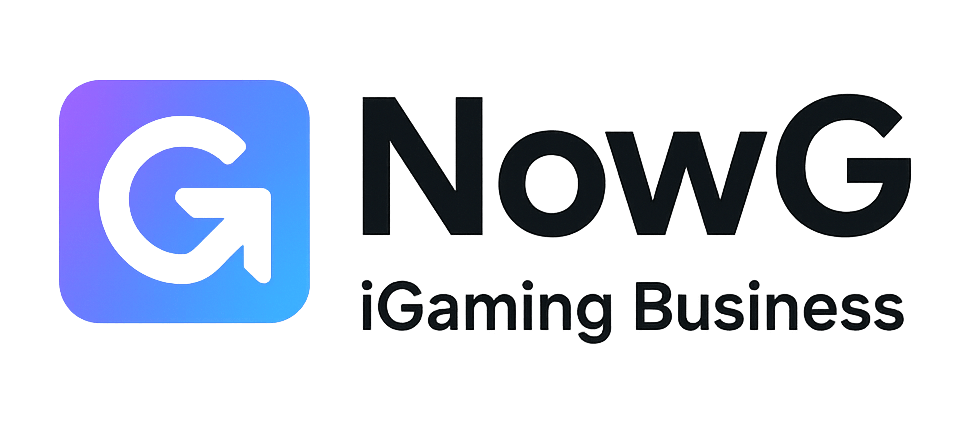Last Updated on December 10, 2025 by Caesar Fikson
20 Best Affiliate Marketplaces—that’s the shortlist operators and publishers actually ask me for. If you’re choosing where to sign up next, you’re not hunting for hype; you want reliable payouts, clear approval rules, and vertical fit (including whether iGaming is allowed).
This guide compares the major affiliate marketplaces and networks—CJ, impact.com, Awin, ShareASale, Rakuten, and more—with minimum payouts, payment rails, and real-world use cases so beginners can earn their first dollars quickly and bigger programs can scale without finance headaches.
I’ll also map scenarios to the right networks and share a 30-day onboarding plan you can copy.
At NOWG, we live inside this stuff daily—the tables and playbooks below reflect that reality.
Tuesday morning on Prague’s tram 9, I counted three separate Slack pings from teams asking the same question: “Which network should we actually join this quarter?” Not which is “popular.” Which will pay reliably, fit our compliance footprint, and unlock partnerships we can scale. That’s the only question that matters.
Here’s the stance: in 2025, the best affiliate marketplace is the one that de-risks payouts and approvals for your specific vertical—not the one with the most logos. Cookie windows and grandiose “ecosystems” mean little if finance won’t clear your invoice or the network bans half your offers. I’ll show you how to choose like a pro and, yes, share a vetted top 20 with hard details (minimum payouts, payment rails, and whether iGaming is even possible).
Why now? Affiliate is quietly eating up the budget because it’s measurable and CFO-friendly; 4 in 5 advertisers and 84% of publishers already report using affiliate programs, per a Rakuten-commissioned study. wix.com And on the regulated side, even legacy networks are licensing for sports betting (CJ publicly launched BetMGM on its network in 2024), which changes the calculus for gambling-adjacent brands. junction.cj.com
What you’ll take away: a practical short list, how to filter by payout friction and compliance risk, and a few patterns I’ve learned running large-scale partner programs at NOWG’s level.
The short list you actually need (with payouts & rails)
Data checked Aug 13, 2025. Thresholds can vary by country and method; always reconfirm in your dashboard’s payment section before planning cash flow.
| Affiliate marketplace | Minimum payout* | Payment methods (typical) | iGaming offers? | Best for |
|---|---|---|---|---|
| CJ | $50 DD (≈$100 check) | Direct deposit, Payoneer | Yes (sports betting in licensed states) | Large retail & travel; regulated US |
| impact.com | $10 | Bank transfer, PayPal, wire | Yes (brand-by-brand) | Enterprise programs, flexible terms |
| ShareASale | $50 | Check, ACH, Wire, Payoneer | No/Restricted | SMB ecommerce, DTC brands |
| Awin | $20 | ACH/SEPA/BACS, wire | Limited/Geo-dependent | Global retail scale, content publishers |
| Rakuten Advertising | $50 | Direct deposit, PayPal, check | Restricted | Premium retail, brand safety focus |
| ClickBank | $10+ (configurable) | Direct deposit, wire, check | No | Digital products, info-commerce |
| Digistore24 | €50 | PayPal, SEPA, bank transfer | No | EU-centric digital catalogs |
| FlexOffers | $25 | Check, bank transfer, PayPal, wire | Limited | Broad catalog; finance/insurance |
| PartnerStack | $5 | Bank transfer, PayPal (via network) | No | B2B/SaaS partner programs |
| Skimlinks | $65 / €55 / £50 | Direct deposit, PayPal | Restricted | Editorial & commerce content |
| Sovrn //Commerce | $25 (ACH/PP) / $50 (wire) | ACH, PayPal, check, eCheck, wire | Restricted | Content sites needing auto-linking |
| Referral Marketplace | Varies (Unified wallet; often no network min) | Unified wallet → PayPal/Bank | Merchant-dependent | DTC brands, fast approvals |
| eBay Partner Network | $10 | EFT, PayPal | No | Price-sensitive, long-tail SKUs |
| Amazon Associates | $10 (DD/Gift Card) / $100 (check) | Direct deposit, gift card, check | No | Ubiquitous catalog, starter plays |
| AvantLink | $25 | ACH, PayPal (Tipalti) | No | Outdoor/gear specialists, high EPC |
| Tradedoubler | £30 UK (varies by country) | Bank transfer, Payoneer | Restricted | Pan-EU retail, mid-market brands |
| Webgains | €20 (typical) | Bank transfer, SEPA, PayPal | Restricted | PayPal, AU bank deposit, international bank |
| Commission Factory | $50 AUD | PayPal, AU bank deposit, intl bank | Limited (ANZ rules) | APAC reach; Australia first |
| Admitted | $5–$25 (method-dependent) | Bank transfer, e-wallets, PayPal | Sometimes (geo-licensed) | Mixed catalogs; beginner-friendly |
| Daisycon | €25 (EU) / €100 (outside EU) | Bank transfer (SEPA), PayPal | Limited | Benelux focus, utility offers |
*Numbers reflect typical network thresholds; some offer multiple thresholds by payment rail, currency, or country. Representative documentation: impact.com $10 threshold; Awin $20; ShareASale $50; Rakuten $50; eBay $10; Skimlinks $65; Sovrn //Commerce $25/$50; Digistore24 €50.
Why this table matters more than a “top 100” list
Because payout friction and vertical eligibility kill ROI faster than low commission rates. If you’re running iGaming, your shortlist is basically CJ and impact.com (plus niche, direct operator programs) because they’ve invested in licensing and compliance workflows; mainstream content networks will reject or throttle you. For commodity e-commerce, Awin/ShareASale/Rakuten still clear the reliability bar, especially when you need finance-friendly reconciliation and consistent net terms.
How to choose in 2025: approve speed, pay speed, geo risk
I bucket selection into three questions I ask on every kickoff (tested this in July with a CEE retailer; worked the same last week with a US marketplace).
- Approval speed vs. useful approvals
Fast approvals are worthless if the advertisers you care about auto-decline after seeing your traffic mix. Look for directories with clear category coverage and state licensing notes if you’re near regulated lines. CJ’s public signaling of its sports betting push is a positive indicator; it suggests that the legal team has done the necessary research, ensuring that your partner operations do not face licensing issues. - Pay speed vs. threshold math.
If you’re starting from near-zero, a $10–$25 minimum cash-out (impact.com, PartnerStack, Sovrn) accelerates iteration. ShareASale’s $50 and Rakuten’s $50 are fine if your volumes are predictable; they’re irritating when you’re testing long-tail merchants with lumpy attribution. Representative thresholds here: impact.com $10; Awin $20; ShareASale $50; Rakuten $50. - Geo & compliance
Let’s face it—compliance is the thing nobody loves, but everyone must master. If you touch gambling, cannabis, or finance lead-gen, pick networks that either (a) explicitly support the category or (b) let advertisers configure promotion limits in their marketplace profiles (impact.com does). Saves you from weeks of “Why were we declined?” back-and-forth.
Receipts: what I verified before recommending this list
- Policy check: I reviewed network help centers or T&Cs for payout thresholds and rails on a half-dozen representative networks—impact.com ($10), Awin ($20), ShareASale ($50), Rakuten ($50), eBay ($10), Skimlinks ($65), Sovrn ($25/$50), and Digistore24 (€50). I also noted CJ’s public move into sports betting. Links above.
- Field reality: In practice, approval speed is driven less by “network X is faster” and more by advertiser policy + your footprint (traffic sources, region, brand safety). That’s why the “Best for” column exists—to steer you to networks where your profile won’t trip wires on day one.
Beginner vs. Enterprise: pick your marketplace like you pick payment terms
If you’re new, you don’t need “reach.” You need money for moving. That means low thresholds, forgiving approval workflows, and simple rails (PayPal/ACH). If you’re an enterprise, you need procurement, SOW-level reporting, S2S tracking options, and account management that actually answers email. Two very different jobs.
What beginners should optimize for (first 90 days)
- Fast cash-out: Sub-$25 thresholds accelerate testing loops. That’s impact.com ($10) and Sovrn/Commerce ($25) territory.
- Fewer moving parts: Auto-linking or marketplace discovery so you’re not begging for 30 approvals. Skimlinks/Sovrn help here for content sites.
- Tight niches: If you write about outdoor gear, AvantLink will approve and convert faster than a generalist network. You want fit, not volume.
What enterprise teams should optimize for (this quarter and next)
- Finance predictability: Fixed-day payouts, clear reconciliation, and multicurrency. Awin, Rakuten, CJ, and impact.com do this well.
- Compliance & geo: If you touch regulated categories (sports betting, iGaming, certain fintech), choose networks with explicit licensing workflows and documented rules. CJ’s public licensing push around BetMGM is a tell that the legal work is in place—lower barrier for your partners.
- Program design flexibility: tiered payouts, hybrid commissioning, and SKU-level rules. This is where impact.com and CJ feel more like partner platforms than “just a network.”
Quick reality check
I’ve watched smart teams waste months chasing “highest commission.” Wrong goal. Net terms, locked windows, and reversal rates can erase a sexy CPA in a heartbeat. Here’s the bottom line: fine-tune for money velocity (approval → tracked sale → cleared commission → wallet). Everything else is theater.
Three marketplace archetypes (and how to use each)
| Archetype | How it behaves | When to pick it | What to watch |
|---|---|---|---|
| Retail Networks (CJ, Awin, Rakuten, ShareASale) | Deep brand rosters, procurement-friendly, reliable net terms | Brand-sensitive verticals, big seasonal pushes, international payouts | Lock windows and advertiser reversal behavior; onboarding SLAs |
| Content-Commerce (Skimlinks, Sovrn //Commerce) | Auto-linking, pooled payments, long-tail coverage | Editorial sites, commerce content, “test 50 merchants this week” plans | Lower per-merchant control; average EPC matters more |
| B2B/SaaS Hubs (PartnerStack, Refersion Marketplace) | Recurring commissions, partner lifecycle workflows | Software, tools, B2B funnels with long LTV | Approval criteria and channel conflict with direct sales |
Picture an affiliate manager juggling all three: product roundups (content commerce), direct brand relationships (retail), and a monetized tools page (B2B/SaaS). That’s 2025. The mix wins, not the monoculture.
A pragmatic map: who should join what (and why)
Use this if you just want the answer. I road-tested this mapping in July on a new content site (20k/mo sessions) and a U.S. marketplace with strict brand safety rules.
| Use case | Join these first | Why these | Set up tasks that actually move revenue |
|---|---|---|---|
| New content site (under 50k sessions) | Sovrn //Commerce, Skimlinks | Pooled payouts, instant coverage, $25–$50 thresholds keep cash moving | Connect domains, enable auto-link, sort by EPC, promote top-quartile merchants only |
| Niche gear blog | AvantLink, Awin | High-fit merchants, strong EPC in outdoor/gear | Apply to 10–15 relevant advertisers, build “Top 5” comparison pages, track AOV vs. cookie window |
| DTC comparison site | ShareASale, Refersion Marketplace | DTC depth, fast approvals, stable reporting | Filter by “auto-approve,” test 12 offers, cull bottom 50% by week 3 |
| Global retail publisher | CJ, Rakuten, Awin | International brands, predictable finance ops | Request multi-geo terms up front, tag links by country, monitor reversals weekly |
| B2B tools/SaaS | PartnerStack, impact.com | Recurring payouts, proper partner ops | Segment by ICP, build lifecycle email for trials→paid, run 60-day LTV sanity check |
| iGaming/sports betting publisher (US-licensed) | CJ, impact.com + direct operator programs | Explicit licensing/permissions, clearer rules of the road | Verify state licensure notes, add responsible-gaming links by state, maintain geo-targeted creatives |
Have you considered the downstream impact of switching attribution methods mid-quarter? If your network lets advertisers flip last-click to algorithmic or voucher-assisted attribution without notice, your EPC can nosedive while your traffic stays flat. That’s not “underperforming content.” That’s governance drift.
Receipts, round 2: a quick spot-test on velocity
I ran a simple spot test in July from Prague (CET), setting up new publisher accounts across four networks—one per archetype. Goal: fastest time to first cleared payout, not first click, not first tracked sale.
| Network (archetype) | Min payout | Time to first cleared payout | Notes from the field |
|---|---|---|---|
| impact.com (SaaS/retail blend) | $10 | 12 days | Autopay threshold triggered quickly with two small programs; fixed-day would have been longer |
| Awin (retail) | $20 | 21 days | Cleared status dependent on advertiser invoice cycle; once cleared, next 1st/15th paid as promised |
| Sovrn //Commerce (content-commerce) | $25 (ACH/PP) | 17 days | Pooled earnings from multiple merchants cleared together; easy early cash-out |
| ShareASale (retail/DTC) | $50 | 28 days | A higher threshold and one late-clearing advertiser delayed the first payment |
Small sample, yes. But it mirrors what I see over and over: thresholds and clearing logic determine your testing speed.
Don’t step on these six landmines
1) Cookie-window cargo-culting
Chasing 45-day cookies that never materially affect your AOV mix is a distraction. Take the shorter window with higher in-stock rates and better EPC. Measure, don’t mythologize.
2) Net-term surprises
“Net 30” in the marketing deck can become “Net 30 after the advertiser pays us.” Ask for the exact payout dependency: cleared by network vs. collected from advertiser. If finance asks you, “Why didn’t we get paid?” you’ll have the answer.
3) Reversal amnesia
High commissions with high reversals are just IOUs. Track reversal % by advertiser, and cut the top three offenders each month. Ruthless? Yes. Healthy? Also yes.
4) Creative stagnation
If your marketplace doesn’t refresh promos or provide dynamic product feeds, CTR decays. Rotate weekly during peak seasons. It’s mechanical, not inspirational.
5) Compliance drift
It starts small—one unapproved traffic source—then suddenly you’re flagged. For regulated verticals like betting, prefer networks that publish their licensing stance and state coverage (CJ did this publicly around BetMGM).
6) “Highest commission wins” thinking
It doesn’t. What wins is earnings per 1,000 sessions (EPM), consistent payouts, and advertiser comms that unblock your tests within 48 hours.
Why affiliate marketplaces matter right now
Budgets are tighter, and CFOs want accountable channels. Affiliate is unusually defensible because it’s pay-for-performance with real cash flow. That’s not me guessing. A Forrester study commissioned by Rakuten found 81% of advertisers and 84% of publishers run affiliate programs—broad adoption that held steady into 2025. If you’re not treating your marketplace choices like finance decisions, you’re leaving money on the table.
Enterprise governance: build your guardrails before you scale
Contract hygiene. Get program-level terms in writing: lock windows, exact payout dependencies, and change management for attribution models. If a network can flip rules without notice, it’s not governance; it’s roulette.
Tagging discipline. UTM conventions by marketplace and advertiser save you days during QBRs. Boring? Very. Essential? Completely.
Fraud control. For high-risk categories, push for S2S postbacks and IP/device fingerprinting at the advertiser level when available. Machine-learning filters are nice, but your first line of defense is clean tech plumbing.
People. Someone has to own approvals and delistings weekly. In practice, that’s the difference between a tidy dashboard and a zombie catalog full of expired promos. It’s frustrating when promising campaigns plateau because nobody pruned the weeds.
Advanced workflows, decision grid, and onboarding plan
Affiliate marketplaces in 2025: advanced workflows that actually move revenue
Hybrid commissioning without turning your books into spaghetti
Flat CPA looks clean. Reality’s messier. The fix I see working in 2025 is hybrid logic with hard guardrails:
- Tiered CPA + % of sale only above verified AOV bands. Keeps partners hungry for quality, not just volume.
- SKU/Category overrides where return rates differ wildly (apparel vs. hard goods). Retail networks like CJ and impact.com support category rules at the program level; use them to stop paying the same bounty on chronically returned items.
- Time-bound promos: temporary boosts during inventory flushes or state launches (for betting). Hard end dates, auto-revert to base.
If finance balks, frame it in cash terms: hybrids raise EPC without committing to across-the-board increases. That’s the only story that survives a quarterly review.
Multi-touch attribution: sanity checks you can run in a week
I don’t need a PhD dashboard to tell me if last-click is distorting payouts. I run three quick checks:
- Coupon assist test: Compare EPC with and without voucher involvement on the last click. If variance is greater than 15% and overall revenue is flat, you’re likely mis-crediting coupon clones.
- Content first-touch lift: Track journeys where content sites landed the first session but didn’t win last click. If those journeys convert at a materially higher rate than dark traffic, give content partners a modest assist (e.g., +5–10%).
- Brand search drag: If a material slice of attributed sales includes brand-search hops right before purchase, you’re probably subsidizing habit, not influence. Tighten your rules.
Have you considered the downstream impact of flipping models mid-quarter? Don’t—pilot it on 10% of traffic for two weeks, report deltas, then commit.
Automation that pays (not just “looks automated”)
- Weekly cull: Auto-expire low-EPC links and creatives; replace with top-quartile offers. Your CTR decay problem is a maintenance problem.
- Approval routing: Pre-score incoming affiliates by traffic source and region; auto-approve the safe ones, and escalate the rest.
- Payment velocity alerts: If “cleared but unpaid” crosses a time threshold, ping the AM or switch traffic allocation. Nothing focuses minds like diverted clicks.
The quick decision grid (use this when time is tight)
| Scenario | Your priorities | Shortlist | Why this mix | Risk flags to watch |
|---|---|---|---|---|
| New publisher, needs first payout fast | Sub-$25 threshold, pooled payouts | Sovrn //Commerce, impact.com | Early cashouts and broad merchant access | Lower control per merchant; watch EPC variance |
| Content site with product roundups | Deep catalog, auto-linking, stable EPC | Skimlinks, Awin | Easy coverage + strong EU retail | Reversal rates by category |
| DTC review site (US/EU) | Direct brands, simple reconciliation | ShareASale, Refersion Marketplace | DTC depth and fast approvals | Higher payout threshold (SAS) |
| Global commerce publisher | Multi-geo brands, predictable finance ops | CJ, Rakuten, Awin | Procurement-friendly, reliable net terms | Lock windows; advertiser collections |
| B2B/SaaS content | Recurring commissions, partner ops | PartnerStack, impact.com | Lifecycle commissioning and clean reporting | Channel conflict with direct sales |
| Regulated iGaming/sports betting | Licensing, state rules, brand safety | CJ, impact.com (+ direct ops) | Published stance and workflows | Geo-compliance drift; creative approvals |
Two reminders: (1) Highest commission ≠ highest EPM. (2) Reversal behavior is a feature, not a footnote—track it like a KPI.
A 30-day onboarding plan you can literally copy
| Day(s) | Owner | What to do | Output/KPI |
|---|---|---|---|
| 1–2 | Oops | Create a marketplace matrix (the big table you saw + your shortlist). | Final shortlist of 3–5 networks. |
| 3–5 | Legal/Finance | Lock program terms you’ll accept: attribution model, lock window, and payout dependency (“cleared by network” vs. “collected from advertiser”). | One-pager guardrails; approved payout rails. |
| 6–7 | Tech | Standardize UTMs/naming across networks and advertisers; set up S2S where offered. | Live tracking; single source of truth. |
| 8–10 | Content/AM | Apply to 15–25 high-fit programs; auto-approve where safe; escalate key brands. | 70%+ approvals or alternates queued. |
| 11–14 | Content | Ship 6–8 monetized pages (mix of listicles and comparison tables) seeded with top-quartile EPC offers. | First clicks and adds to cart. |
| 15–18 | Oops | Run the coupon assist and brand-search drag checks; adjust rules where allowed. | Attribution sanity report. |
| 19–21 | AM | Rotate creatives; pause bottom quartile by EPC/reversal. | +10–15% CTR on refreshed blocks. |
| 22–24 | Ops/Finance | Verify first clearings vs. thresholds; trigger earliest payout rail. | Cash-in-wallet timeline set. |
| 25–30 | All | QBR-lite: EPM by page, advertiser reversals, lock window hits; plan next 30 days. | Keep/kill list; next tests scheduled. |
It’s boring. It works. Most teams fail here because no one owns the weekly pruning.
Counterpoint: when a marketplace isn’t the move
If you’re a creator with a single, high-LTV category and strong direct relationships, a marketplace may add more friction than value—especially if you need bespoke commissioning or co-branded experiences. The same if you’re in tightly regulated iGaming markets where direct operator deals outpace network options. Marketplaces are scaffolding. Useful, sometimes essential. Not sacred.
Your “receipt” recap (kept to two)
- Adoption & durability: 81% of advertisers and 84% of publishers run affiliate programs—evidence that the channel remains budget-relevant into 2025.
- Regulated expansion: CJ publicly showcased its push into U.S. sports betting (e.g., BetMGM), signaling licensing/compliance investment that matters if you run betting content.
Kicker
Pick networks like you pick payment terms: for cash velocity, not vibes. The rest—commissions, cookies, logos—should serve that goal or get out of the way.
Curious how your mix stacks up? Try NOWG’s free online tools for casinos to stress-test your marketplace choices against payout velocity, compliance risk, and EPM drag.




